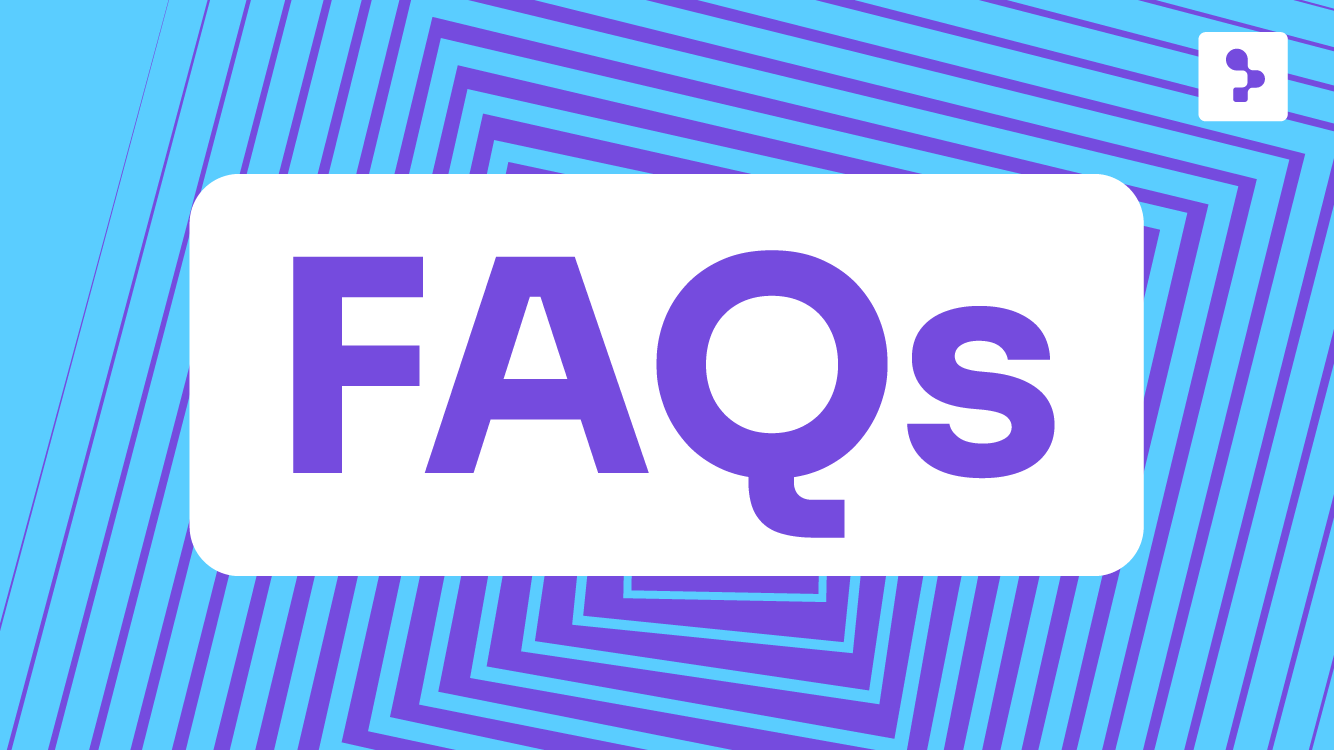Leading AML efforts in Canada? Get a strategic view of Anti-Money Laundering, evolving regulations, and how to build tools that support due diligence and automation.


Why Anti-Money Laundering Is a Strategic Priority Now
As financial services accelerate in complexity and speed, so do the risks. At the forefront of regulatory priorities across Canada—and globally—stands anti-money laundering (AML): the set of rules, technologies, and practices designed to detect and prevent the misuse of financial systems for illicit purposes.
In Canada, the consequences of non-compliance are no longer hypothetical. A striking example is the $3 billion fine imposed on TD Bank by U.S. regulators in 2024 due to significant failures in its AML systems (CBC News). The case sent a clear signal to Canadian institutions: compliance lapses can lead to high-profile penalties, reputational damage, and regulatory scrutiny on both sides of the border.
To stay competitive and trusted, financial institutions must go beyond minimum requirements and embed AML compliance into every layer of their operations.
Ready to strengthen your AML/KYC workflows?
Let’s build resilient, audit-ready systems together.
Explore our Financial Software Development Services and Contact Us!
What Is Anti-Money Laundering? AML Compliance
Anti-Money Laundering (AML) refers to a set of laws, regulations, and processes that aim to prevent criminals from disguising illegally obtained funds as legitimate income.
In general, AML regulations are designed to:
- Detect suspicious transactions
- Identify high-risk clients or entities
- Prevent terrorist financing
- Track cross-border transfers
- Strengthen overall financial system integrity
These efforts are closely tied to Know Your Customer (KYC) regulations, which require institutions to verify customer identities, assess risk, and understand the nature of their financial activities.
What Are Know Your Customer (KYC) Regulations?
KYC regulations are a critical component of anti-money laundering (AML) efforts, requiring financial institutions and money services businesses to verify the identity of their customers before establishing or continuing a business relationship.
At Abstracta, we view KYC as more than a regulatory checkbox; it’s a foundational practice that helps build safer, more trustworthy financial systems.
By collecting and analyzing key customer data, such as government-issued IDs and beneficial ownership information, institutions can develop accurate customer risk profiles and detect suspicious transactions. This also helps meet the requirements of frameworks like the Proceeds of Crime (Money Laundering) and Terrorist Financing Act (PCMLTFA) and FINTRAC guidelines (Financial Transactions and Reports Analysis Centre of Canada).
KYC processes are not static. They involve ongoing monitoring to update records, customer information, reassess risk, and remain compliant with evolving AML rules and implementing regulations AML rules. Whether you’re building a customer identification program (CIP) or reviewing a firm’s written AML compliance program, the ultimate goal is to prevent money laundering and terrorist financing from undermining the integrity of the financial system.
Together, AML and KYC frameworks form the backbone of responsible banking and are mandatory for banks, credit unions, fintechs, insurers, and other entities operating under Canada’s financial legislation.
Exploring the future of banking and fintech in Canada?
Download our ebook to uncover key challenges and AI-powered solutions
Key AML Compliance Frameworks in Canada
Canada’s AML regime is built upon a solid legislative and regulatory foundation, led by the Proceeds of Crime and PCMLTFA, and enforced by FINTRAC. But beyond naming these pillars, it’s essential to understand how they operate in practice—and what they demand from today’s financial institutions.
What Is the PCMLTFA?
The PCMLTFA outlines the obligations for reporting entities, which include banks, credit unions, securities dealers, money services businesses, casinos, life insurers, and certain fintechs and crypto service providers.
These entities must implement a comprehensive written AML compliance program, designate an AML compliance officer, and submit all required reports, such as suspicious transaction reports (STRs) and large cash transaction reports (LCTRs), which must be filed electronically.
Note: While the terms STR and LCTR are widely used in international AML contexts, in Canada the official terminology used by FINTRAC is simply Suspicious Transaction Report and Large Cash Transaction, without standardized acronyms like SAR or CTR commonly found in U.S. regulations.
FINTRAC’s Role in Supervision
FINTRAC, Canada’s financial intelligence unit, plays a central role by collecting, analyzing, and disclosing financial data to help detect and disrupt money laundering and terrorist financing. Its oversight approach increasingly emphasizes:
- Ongoing monitoring and review cycles
- Thematic assessments of high-risk sectors
- Coordination with law enforcement and international bodies
How Canada’s AML Landscape Is Evolving
Canada’s AML regime is undergoing important updates to adapt to emerging threats and technologies:
- Expanded scope under the PCMLTFA, now covering digital-first entities and non-traditional financial actors
- Greater scrutiny of complex ownership structures, including beneficial owners and politically exposed persons (PEPs)
- Mandatory enhanced due diligence (EDD) for high-risk scenarios like international wire transfers and correspondent banking
- Alignment with Financial Action Task Force (FATF) standards, including handling of predicate offenses to money laundering, such as organized crime, tax evasion, and drug trafficking
- Expectations for innovation-readiness, involving compliance strategies for real-time payments, AI-powered monitoring, and open banking APIs.
From Compliance to Culture
Today, regulatory expectations go beyond box-checking. Institutions are expected to demonstrate a risk-based approach supported by:
- Accurate customer risk profiles
- Integrated customer identification programs (CIP)
- Adaptive AML systems capable of identifying anomalies in real time
Ultimately, AML compliance in Canada is about preserving the integrity of the financial system, not only through legal adherence but by fostering a proactive culture of prevention.
From “Snow Washing” to Enforcement: Why Canada Is Under Pressure
Canada has long enjoyed a reputation as a safe and transparent financial market. However, this image has led to a phenomenon known as “snow washing”, meaning the process of disguising illicit funds by channeling them through Canada’s clean and reputable financial system to make them appear legitimate.
The response? Stricter AML enforcement, more audits, and increased international cooperation.
The aforementioned TD Bank case revealed deep flaws in transaction monitoring and internal alert management. Regulators emphasized that having a system in place isn’t enough; those systems must work. For instance, they have to detect and report suspicious activity, including offenses to money laundering such as securities fraud and market manipulation, which are typical money laundering situations.
These examples underscore the need for reliable compliance systems that evolve with the complexity of financial crimes and cross-border threats. To meet this challenge, financial institutions must strike a careful balance between innovation and integrity, especially as digital services scale across jurisdictions and regulatory expectations grow.
Compliance Gaps: Where Traditional Systems Fall Short
Legacy Compliance vs. Intelligent Systems
| Traditional Controls | Intelligent Compliance Solutions |
|---|---|
| Manual identity checks | Automated digital ID verification |
| Static transaction monitoring | AI-driven anomaly detection |
| Reactive auditing | Real-time compliance dashboards |
| Disconnected systems | Integrated, API-based ecosystems |
| Periodic customer reviews | Continuous behavioral risk scoring |
Legacy systems often struggle with scale, speed, and complexity, especially in environments with digital wallets, mobile-first platforms, or international customers. They also fall short in meeting modern compliance expectations, lacking the flexibility to manage AML reports and systems, monitor financial accounts FBAR, FinCEN, or adapt to risks related to fiat currencies and virtual currencies.
To stay compliant and competitive, institutions need tools built for today’s pace.
At Abstracta, we support financial teams with custom AI agent development that enhances anomaly detection, real-time monitoring, and regulatory adaptability.
Explore our AI Development & Agents Services and book a meeting!
Canada’s AML Opportunity: Tech-Driven Compliance
As fintechs rise and regulatory technology (RegTech) gains traction, there’s growing interest in:
- AML software in Canada that automates monitoring and reporting
- KYC integration tools that reduce onboarding friction
- API-first compliance frameworks for open banking and embedded finance
- AI agents that track behavioral patterns, monitor transactions, and trigger alerts proactively
- Tools that support ongoing customer due diligence and automated reviews on an ongoing basis.
- Solutions aligned with an AML compliance program required under Canada’s PCMLTFA.
These technologies don’t replace compliance teams. They enable them to act faster, more precisely, and at scale.
International Influence: AML and KYC in a Global Context
Canadian institutions must look outward. Regulatory frameworks in the United States, Europe, and other financial hubs increasingly shape expectations at home, especially when it comes to AML and KYC compliance.
In the United States, the proposed Rule 1033, derived from Section 1033 of the Dodd-Frank Act, would require financial institutions to give consumers access to their financial data. This would enable consumers to share that information with authorized third-party apps, strengthening transparency and competition in financial services. While open banking is not yet federally mandated in the U.S., many fintechs are proactively building tools in anticipation of this shift.
In the European Union, the Second Payment Services Directive (PSD2) mandates that banks must allow licensed third parties to access customer payment data, with customer consent, via secure APIs. This regulation fuels open banking in Europe and is complemented by GDPR (General Data Protection Regulation), which governs how personal data, including financial information, can be collected, processed, and stored. Together, these rules enforce strong customer rights, data protection, and accountability.
Globally, many countries look to the standards set by the FATF, an international body that develops and promotes policies to combat money laundering, terrorist financing, and other financial crimes. FATF’s 40 Recommendations serve as a global benchmark for AML/KYC compliance, influencing laws in over 200 jurisdictions.
By aligning with FATF standards and preparing for cross-border interoperability, Canadian financial institutions can future-proof their compliance frameworks, meet international expectations, and strengthen their role in the global financial system. These efforts help detect and report suspicious activity, including predicate offenses to money such as tax evasion, drug trafficking, and dealings with terrorist organizations.
As we can see, anti-money laundering is no longer a compliance checkbox. It has become a strategic necessity in the face of reputational risk, international scrutiny, and rapid digital transformation. The following FAQs address some of the most pressing questions financial institutions face today.
FAQs About Anti-money Laundering Compliance and KYC Regulations in Canada


Foundations and Key Concepts
What Is The Meaning Of Anti-Money Laundering?
Anti-money laundering refers to the set of laws, regulations, and procedures designed to prevent criminals from disguising illegally obtained funds as legitimate income. It helps protect the financial system from abuse and supports the detection of financial crimes.
What Is AML Compliance?
AML compliance involves meeting legal and regulatory obligations to detect and prevent money laundering and terrorist financing. It includes reporting, monitoring, due diligence, and internal governance practices. A firm’s compliance with AML rules reflects its ability to apply these elements across business operations.
What Are The 3 Stages Of Anti-Money Laundering?
The three stages are placement, layering, and integration. Each reflects how illicit actors introduce, move, and legitimize illicit funds through the financial system. These are typical money laundering situations institutions must recognize and mitigate.
What Does It Mean To Launder Money?
To launder money means to make illegally obtained funds appear legitimate. This often involves structured transactions across jurisdictions and systems to hide their origin.
What Is An Example Of Anti-Money Laundering?
An example might be a bank that flags unusual cash deposits from a shell company, submits a Suspicious Activity Report (SAR), and routes the case to a compliance officer—helping detect and report suspicious activity. While SAR is the standard term in the U.S., in Canada, the equivalent report is called a Suspicious Transaction Report, as defined by FINTRAC.
Regulatory Framework In Canada
What Is The PCMLTFA?
The PCMLTFA is Canada’s primary legislation for AML. It sets the requirements for identifying clients, reporting suspicious activity, and keeping appropriate records.
What Is FINTRAC?
FINTRAC is Canada’s financial intelligence unit. It collects and analyzes financial data to support the detection of money laundering and related threats. FINTRAC also reviews a firm’s compliance with national AML regulations.
What Is The AML Policy In Canada?
Canada’s AML policy is based on the PCMLTFA and enforced by FINTRAC. It requires financial institutions to submit reports, monitor financial transactions, and maintain compliance with AML rules.
What Are The Implementing Regulations AML Rules Referenced In Canada?
These regulations clarify how institutions should apply the PCMLTFA, from risk assessment to reporting and customer due diligence.
Which AML Reports Must Be Filed Electronically?
Suspicious transaction reports and large cash transactions must be filed electronically with FINTRAC. This improves traceability and supports enforcement.
Institutional Compliance Responsibilities
Why Is An AML Compliance Program Required?
An AML compliance program helps prevent the misuse of financial institutions for illegal activity. It outlines risk-based procedures, training, and reporting responsibilities.
How Do Institutions Demonstrate Compliance With AML Rules?
They define policies and procedures, conduct ongoing monitoring, assess customer risk, and report relevant activities to FINTRAC. These steps reflect the firm’s compliance with AML obligations.
What Are The AML Compliance Processes?
They include developing a written AML compliance program, assigning a compliance officer, performing customer due diligence, monitoring transactions, and submitting required reports such as the Currency Transaction Report (CTR).
Who Is Responsible For AML Oversight At The Organizational Level?
A senior manager or designated leadership team leads the AML compliance program. This promotes accountability, enables effective resource allocation, and aligns practices with regulatory expectations.
What Is A Transaction Report CTR Must Include?
A transaction report CTR must include details such as client identity, transaction amount, timing, and purpose to support transparency.
What Are Firms Expected To Report In AML?
Firms report suspicious activity, including large or unexplained transactions, third-party transfers, or inconsistent identity data, especially if linked to predicate offenses related to money laundering.
Due Diligence And Ongoing Monitoring
What Are KYC Requirements In Canada?
They include identity verification, risk profiling, and ongoing transaction monitoring. These processes follow FINTRAC guidance and the PCMLTFA and help support transparent customer relationships.
What Is AML In KYC?
AML in KYC refers to integrating anti-money laundering checks into the customer verification process, including profiling, behavior tracking, and risk reassessment.
Who Are Considered Beneficial Owners In AML Compliance?
Beneficial owners are individuals who ultimately control or benefit from a legal entity. Institutions must identify them as part of their AML duties.
How Do Firms Perform Conducting Ongoing Customer Due Diligence?
They update customer information, reassess risk levels, and monitor activity patterns to detect potential threats or changes in behavior.
What Is II Conducting Ongoing Monitoring?
This refers to reviewing client transactions and profiles over time to identify anomalies. It supports continuous risk assessment.
Technology And Operational Tools
Why Is AML Software Important?
It enables faster, more accurate detection of suspicious behavior and simplifies regulatory reporting across systems and jurisdictions.
What Are AML Reports And Systems?
They include platforms and tools used for generating alerts, submitting regulatory data, and supporting compliance workflows.
What Additional Resources Support AML Programs?
Resources include FINTRAC guidance, FATF recommendations, automated monitoring tools, and scenario-based risk typologies.
Is There An Anti-Money Laundering Template For Small Firms?
Yes. FINTRAC offers a basic anti-money laundering template to help small firms develop a program that sets forth minimum standards.
Risk Typologies And Global Context
How Do You Illustrate Typical Money Laundering Methods?
A typical case involves layering funds through multiple accounts or jurisdictions. These scenarios reveal vulnerabilities that AML programs are built to address.
What Are Financial Accounts FBAR, FinCEN, And How Are They Relevant In AML?
While FBAR and FinCEN apply to U.S. persons, Canadian institutions engaged in cross-border services must understand how these reports intersect with AML efforts.
What Is A Compliance Program Under FINRA?
Canadian institutions operating in the U.S. may need to understand the structure and expectations of a compliance program under FINRA, especially around recordkeeping and AML.
What Is Snow Washing?
Snow washing refers to using Canada’s clean reputation to mask illicit financial activity. It’s a growing concern among global regulators and law enforcement.
How Abstracta Helps Financial Institutions Stay Compliant and Agile


With over 16 years of experience and a global presence, Abstracta is a leading technology solutions company with offices in the United States, Chile, Colombia, and Uruguay. We specialize in software development, AI-driven innovations & copilots, and end-to-end software testing services.
We’ve built robust partnerships with industry leaders Microsoft, Datadog, Tricentis, Perforce BlazeMeter, and Saucelabs to provide the latest in cutting-edge technology.
How do we support you? By strengthening the quality, scalability, and reliability of your AML and KYC systems through tailored testing and AI-powered solutions. Our services include:
- Compliance testing of AML/KYC systems and data pipelines: We validate the functional, performance, and security aspects of systems used to detect suspicious activity and manage customer data, minimizing risk and improving coverage.
- AI agent development for anomaly detection and audit readiness: Our AI experts co-create assistants that support testing workflows, simulate behavior, or flag patterns, helping teams gain visibility and improve response time.
- Integration testing for digital banking and payment apps: We test how systems connect and behave across platforms, fostering reliability in high-risk environments such as payment gateways and onboarding flows.
- Open banking API testing aligned with Canadian and international frameworks: Our team validates APIs to support performance, security, and interoperability under open banking and related standards.
- Custom testing frameworks to support FATF and FINTRAC alignment: We build modular, automated testing frameworks tailored to the specific requirements of AML compliance testing in regulated environments.
We believe the future of finance is secure, transparent, and intelligently automated.
Contact us! Let’s build resilient, compliant systems that move your organization forward.
Let’s build resilient, compliant systems that move your organization forward. Contact us today.
Recommended for You
Canada’s Financial Shift: Top Challenges and How to Solve Them with AI
Tags In
Related Posts
5 Most Anticipated Sessions at the O’Reilly Velocity Conference 2017
With so much happening at Velocity this year, here is what not to miss. There’s only a little less than one month to go before the Velocity Conference 2017 in San Jose, California. We are busy getting ready for what we hope to be the best…
3 Keys to a Successful Continuous Testing Implementation
Unless you’ve been hibernating for the past decade or two, I’m sure you have already become well aware of the benefits of continuous testing: reduced cost of development, less waste, improved system reliability, reduced risk upon release, and so on. Of course, putting it into…
Search
Contents
Categories
- Acceptance testing
- Accessibility Testing
- AI
- API Testing
- Development
- DevOps
- Fintech
- Functional Software Testing
- Healthtech
- Mobile Testing
- Observability Testing
- Partners
- Performance Testing
- Press
- Quallity Engineering
- Security Testing
- Software Quality
- Software Testing
- Test Automation
- Testing Strategy
- Testing Tools
- Work Culture





